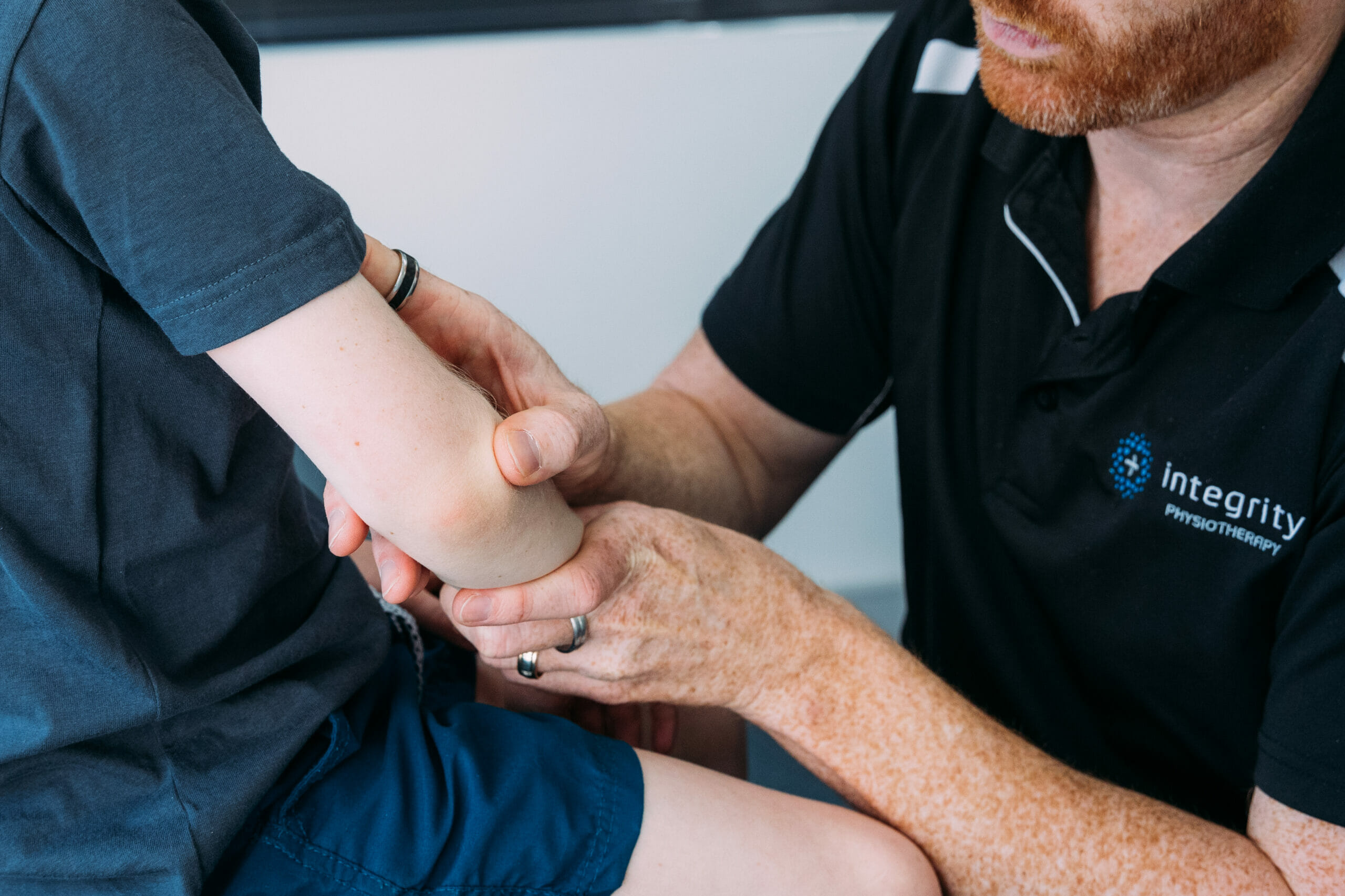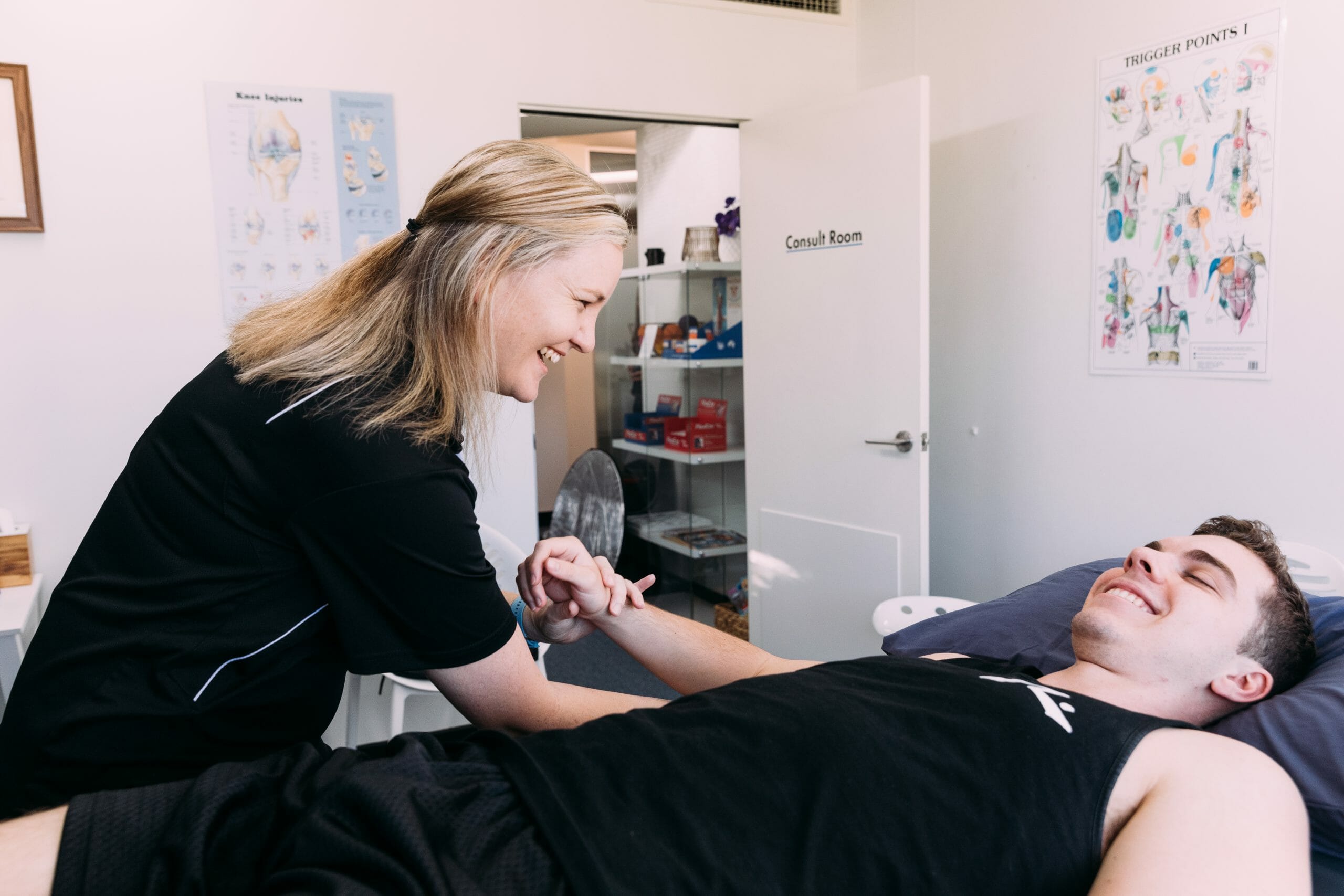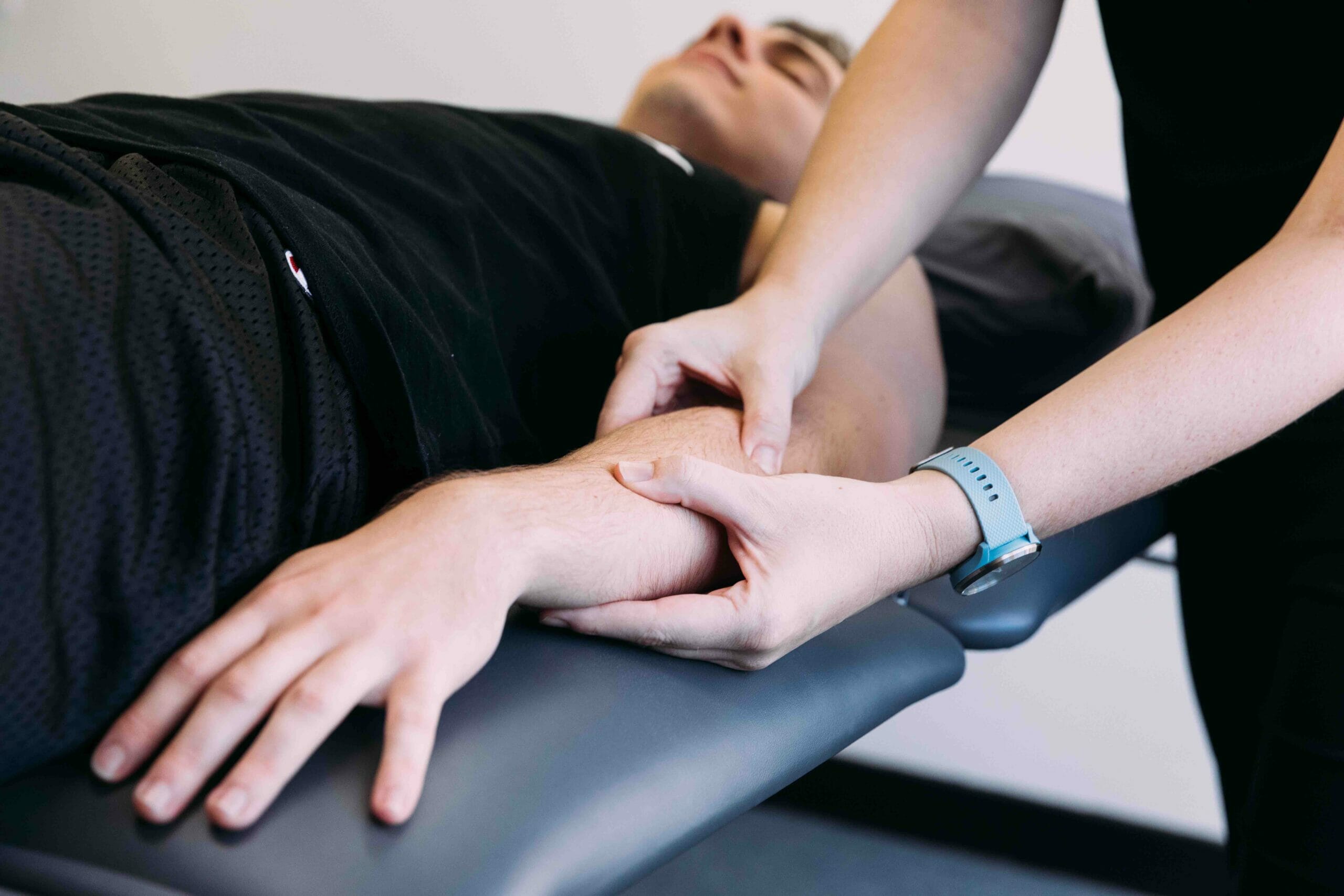
Tennis elbow recovery through rest alone can be very slow and a proactive approach is recommended, consisting of professional diagnosis, treatment and strengthening.
Take control of your tennis elbow and get tailored physiotherapy treatment today. Book an appointment with our experienced team.

What is Tennis Elbow?
Tennis elbow is caused by irritation or structural change to the tendon connecting the muscles of the forearm to the lower end of the upper arm bone at the elbow. These muscles control the ability to bend the wrist backwards and control the position of the wrist in neutral when pushing, pulling or absorbing shock or force through the wrist. There are many other causes of tennis elbow other than tennis, which result in overuse and stress on the wrist and forearm. Activities which cause tennis elbow can be repetitive activities that one is used to but is very often caused by unaccustomed bouts of activity that the person is not used to doing. A range of activities that often cause tennis elbow include:
- Repetitive tasks such as typing and using a computer mouse
- Other racquet sports, rock climbing, gymnastics and weightlifting
- Gardening, painting, or moving house
- Using hand tools such as a hammer or hand saw
- Occupations which involve repetitive wrist and forearm movements
Navigating tennis elbow
Everything you need to know, from symptoms and causes to treatment.
Usually, tennis elbow causes pain while performing gripping tasks, particularly gripping with twisting or while trying to control a load. Interestingly, there can also be a complaint of neck stiffness or tenderness, and signs of nerve irritation like pins and needles or altered sensation in the 4th and 5th fingers of the hand on the same side. The neck can also cause tennis elbow like symptoms or amplify the tennis elbow symptoms even in patients who haven’t noticed an issue with their neck.
Tennis elbow may cause pain in the outer side of the elbow and upper forearm. There may also be other symptoms including swelling, stiffness in the forearm or weakness.
Tennis elbow is relatively simple to diagnose through clinical assessment. The condition often presents with pain on the outside of the elbow, and pain when gripping or contracting muscles that are attached to the outside of the elbow. Your experienced physiotherapist will be able to diagnose your condition quickly. Tennis elbow can then be effectively treated. Initially, it is important to identify the contributing factors to the onset of the pain and make modifications to activities or ergonomics.
Tennis elbow treatment then depends on the individual. Patients often present differently with tennis elbow, so treatment has to be tailored specifically. An experienced physio will be able to provide manual therapy in the form of dry needling or massage, exercise techniques which strengthen and stretch the muscles in your forearm and strategies to offload the arm as it recovers. Some strategies include a strap or arm brace to help reduce the pain and stress on the affected area if you have certain activities which normally provoke pain but are presently unavoidable.
Physio for tennis elbow has been shown to be a very effective form of treatment in both the short-term and long-term management of the condition. Integrity Physio Como aims to improve your tennis elbow by:
- Assisting with tissue repair
- Reducing pain
- Restoring normal muscle strength, movement and muscle length
- Improving and restoring normal range of motion
- Allowing you to return to normal daily tasks without pain
To achieve this your experienced physiotherapist may include gentle mobilisation techniques for the elbow and neck joints, muscle stretches, dry needling, massage and elbow bracing or taping. There are many ways to improve your symptoms with physio for tennis elbow. Your physiotherapist will thoroughly assess and discuss the most effective strategy based on your symptoms and the day to day physical demands on your elbow.
The time it takes to fully recover from tennis elbow will depend on the severity and time frame of the injury. It is recommended to seek treatment early to improve your rate of recovery.





